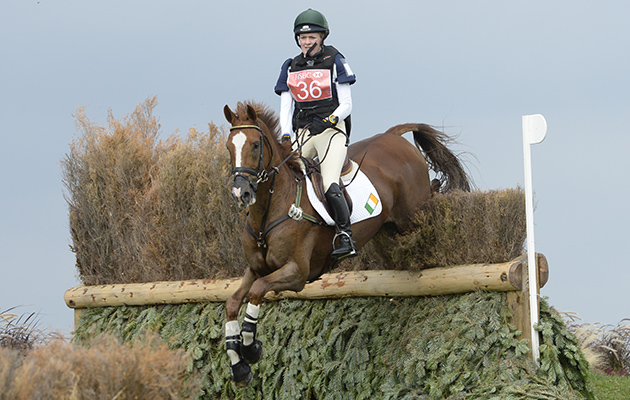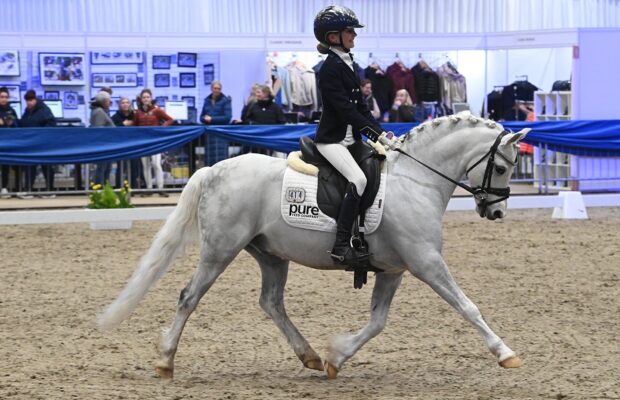Dressage rider Jessica Dunn explains how to achieve harmony in the hand and avoid the horse resisting the bridle
After winning team gold and individual bronze at the 2009 Youth Olympic Games, Jessica went on to collect numerous regional and national titles including top final placings in young horse classes with the Keenan family’s Fyona and Helga (pictured). She is based with her team of horses in Lancashire.
Training the stars
Helga has energy to burn, but is a little short in the neck and very hot to the leg. I ensure she works in self-carriage to help the contact become more consistent. This requires a lot of lateral work, patience and the ability to be one step ahead to help balance but not restrict. A well-balanced seat always helps.
Achieving a soft contact can be one of the hardest things to do as it depends on so many factors — the horse’s natural way of going, balance, confidence in seeking the contact from the rider’s hand, and the rider’s general organisation of their own aids.
Bearing in mind that the horse must always be longitudinally and laterally supple and off the leg to be working into a soft contact, here are some exercises to help.
Tackling the issue
1. Horses who lean on one rein can benefit from a walk “square”. Ride a quarter-pirouette in each corner and a leg-yield, travers or shoulder-fore on each straight side. This will gently manipulate the horse’s body without using the hand. It will also encourage the horse to lift his back and stretch to fill the outside rein while allowing the rider to gauge what aid needs to be given at what time.
2. Horses who become tense in the neck can benefit from the same walk exercise, but on a 20-metre circle. Crucially, the front legs must stay on the line of the circle. Ride the horse from normal bend into a shoulder-fore positioning, using your leg to guide and mould, then change to renvers on the circle line then finally to travers, and repeat. You want the horse to relax into the rein, seeking the contact forward without leaning.
3. On a 20-metre circle in trot, use the open half of the circle to ride a steep shoulder-in. Focus on your inside leg pushing the inside shoulder into the outside of the horse. Once returning to the track, push the horse forward into a working trot, keeping the bend around your inside leg. Collect again when leaving the track. The circle helps to keep the inside hindleg of the horse underneath him, encouraging the rider to turn and guide with the seat and leg rather than the hand.
Consider this…
- It helps to switch from an “advanced” outline to a stretching outline when schooling. I use this a lot in canter; I will ride one full circle in an active canter and then one full circle in stretching, ensuring that the tempo and speed don’t change. Once you find that easy, start to make transitions in and out of canter, ensuring they come solely from the horse listening to the seat.
- Never pull back on the rein. Take your hand wider if you’re struggling to create softness, but don’t pull it back towards you as this blocks the horse’s forward movement and may encourage resistance.
You might also be interested in:

The scales of training explained for horse riders of all levels

Using cavaletti to improve the horse’s canter and balance

Subscribe to Horse & Hound magazine today – and enjoy unlimited website access all year round
Horse & Hound magazine, out every Thursday, is packed with all the latest news and reports, as well as interviews, specials, nostalgia, vet and training advice. Find how you can enjoy the magazine delivered to your door every week, plus options to upgrade your subscription to access our online service that brings you breaking news and reports as well as other benefits.




